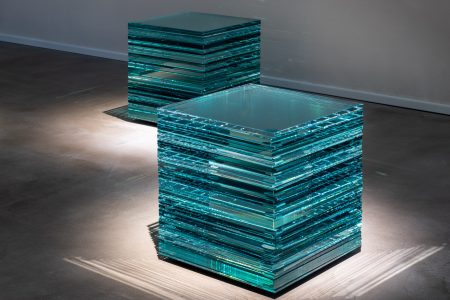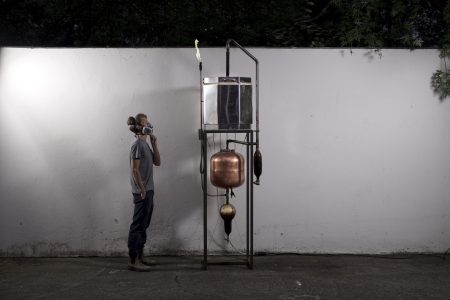Simone Crestani’s Glass Wunderkammer
The Italian artist is displaying a full world inspired by nature —but made with glass and irony— during this year’s Munich Creative Business Week
There are gossamer bonsai trees, with stupefyingly delicate branches. The same level of detail went on the ribs of transparent fish and octopi that climb along the stem of wine glasses.
These are some of the nature-inspired pieces on display in Simone Crestani’s Kristalline Wunderwammer, a solo exhibition at the Ingo Maurer Showroom during this year’s Munich Creative Business Week.
True to his regional heritage, Veneto-born Crestani is known for his glassblowing works, using techniques he learned while still very young. “I am an artisan first, an artist second,” he explains. “Glass chose me, before I had any idea of what I wanted to become. And [my muse is] nature: it fills me with awe and inspires me to give form to my works.”
In his interpretation of the original cabinet of curiosities of yesteryear, he brings together “nature and oddities, the fantastical and the imaginative.” That surely explains the headless chicken with bellies full of wine, the massive and awe-inspiring stag heads and the eery interpretations of bird feet that test the limits of borosilicate glass.
Kristalline Wunderkammer is on display until April 24
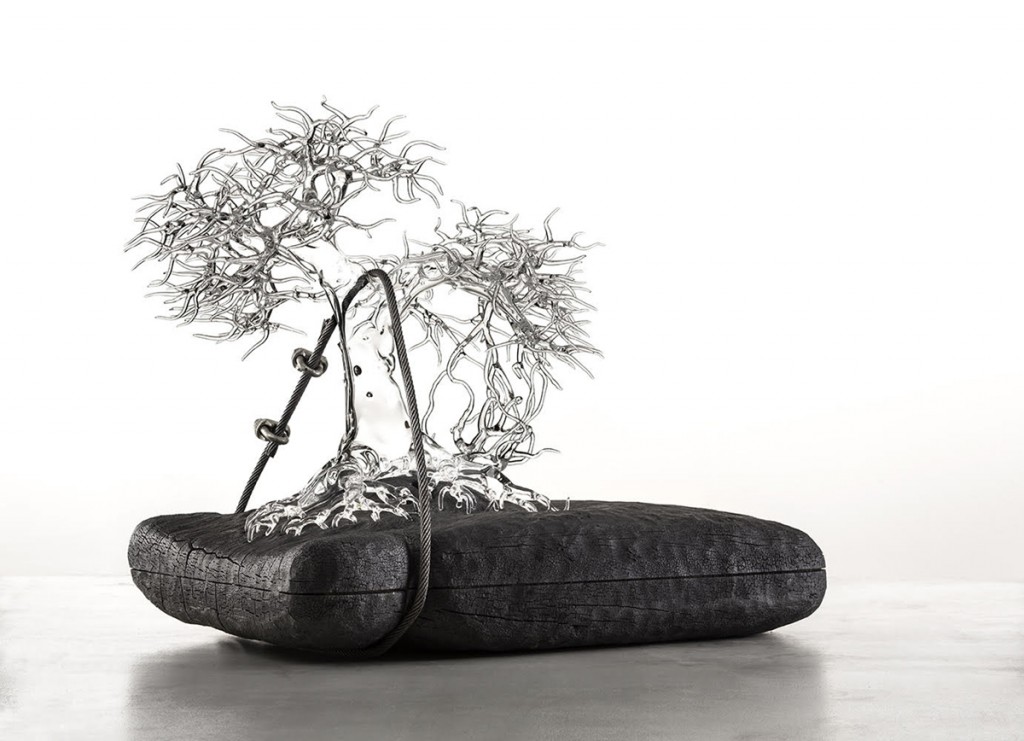
A seed, potentially a tree, bends before demanding observers. In a very unusual assembly, the fragility of glass has a conversation with the solidity of iron.
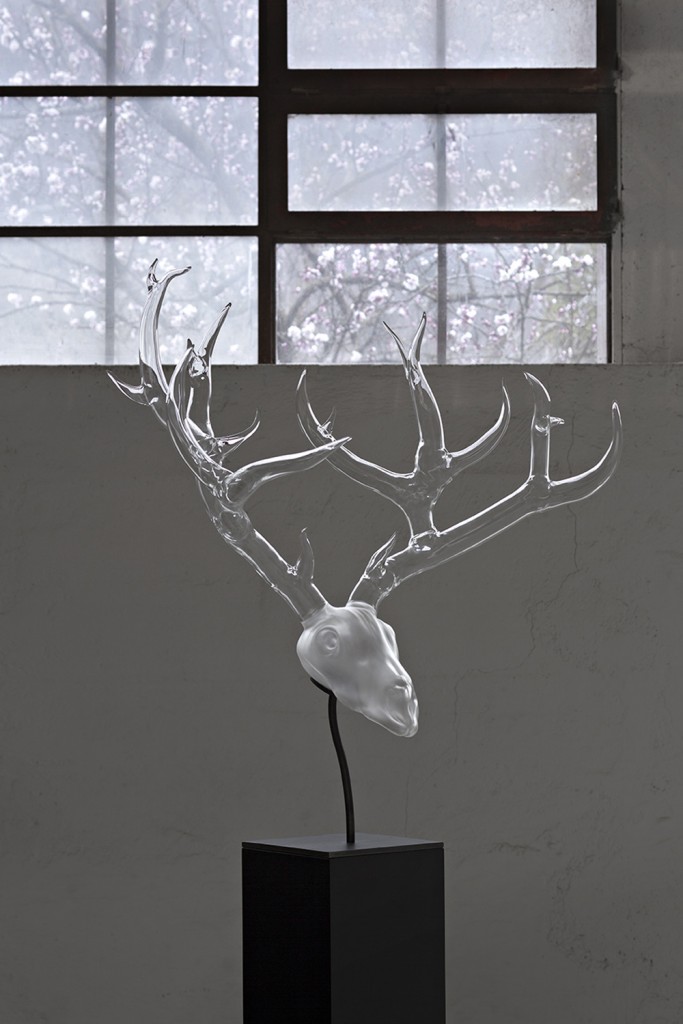
Actaeon looks at this reflection in the pond and realises he has been turned into a stag: it is the wrath of Artemis, inflicting this tragic punishment on him.
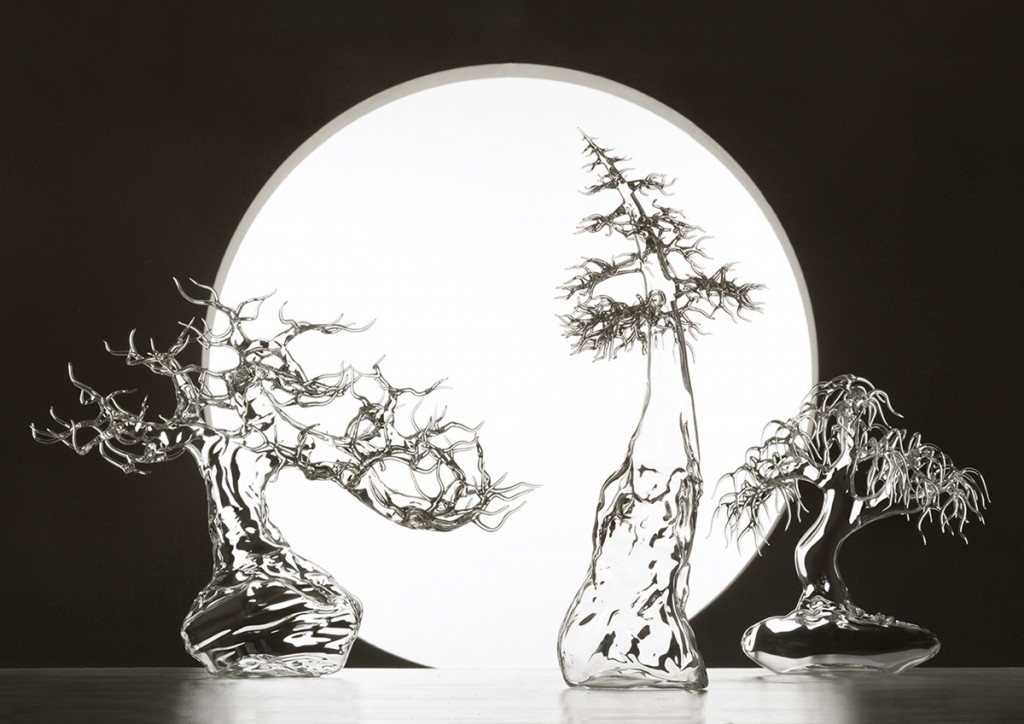
Solid trunks with branches growing upwards, seeking out light: even when Simone’s first projects were still confined to his imagination, they had already taken on the form of bonsai trees.
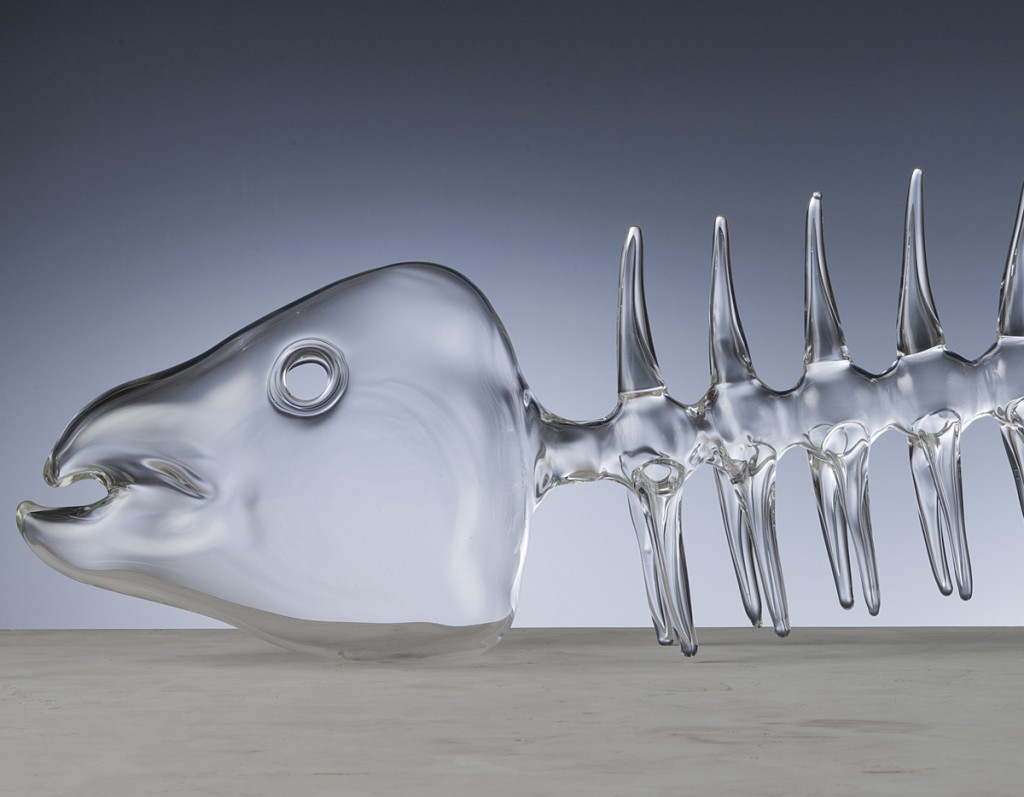
What is left of a fish, in the end, is only structure: captivating organic architecture that brings to life the skeletal minimalism of fish —to which glass lends a last, vibrant spark of vitality.
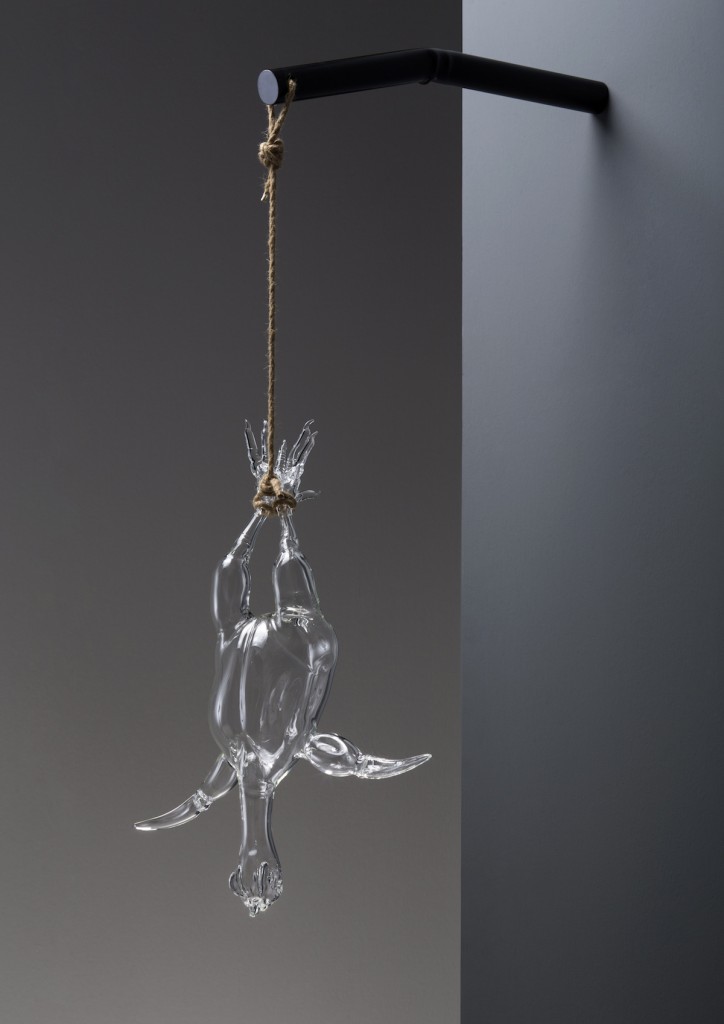
Plucked and inert, a hen reproduced in disquietingly crude detail is trussed up by its feet: a reminder to man that his desire to take possession of nature is in conflict with the need to kill it and inevitably lose it.

The sinuous tentacles of an octopus, recreated in their smallest details, envelop a decanter and the stem of a wine glass —it’s Crestani’s poetic homage to the nocturnal, solitary sea creatures.
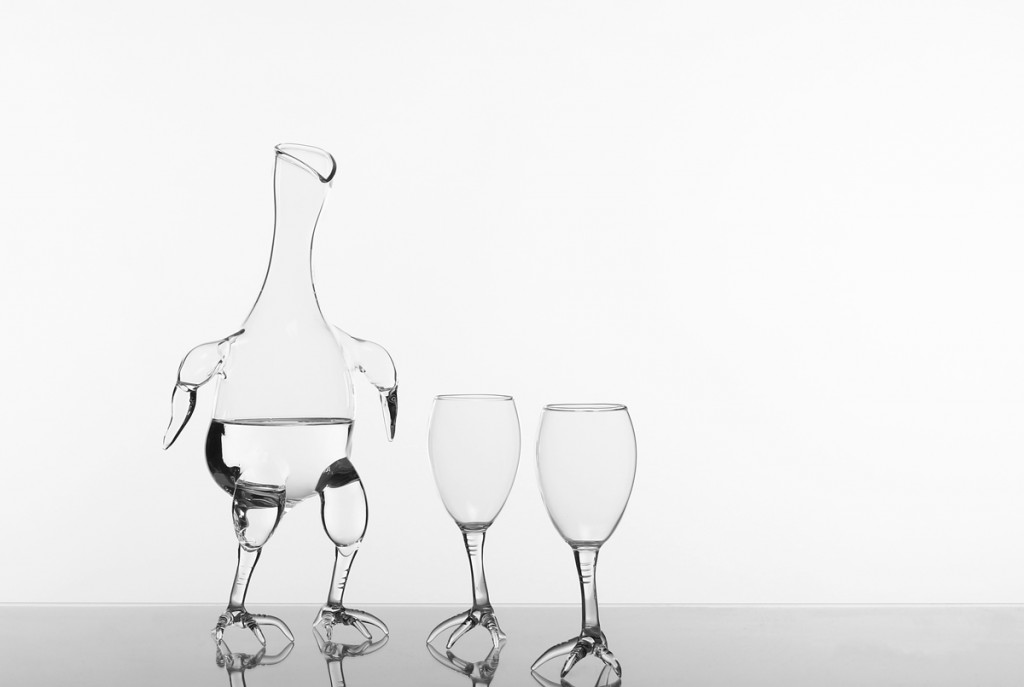
A headless glass hen guards the wine inside its portly belly until it is poured out through the hint of a beak into one of the claw-based glasses.




